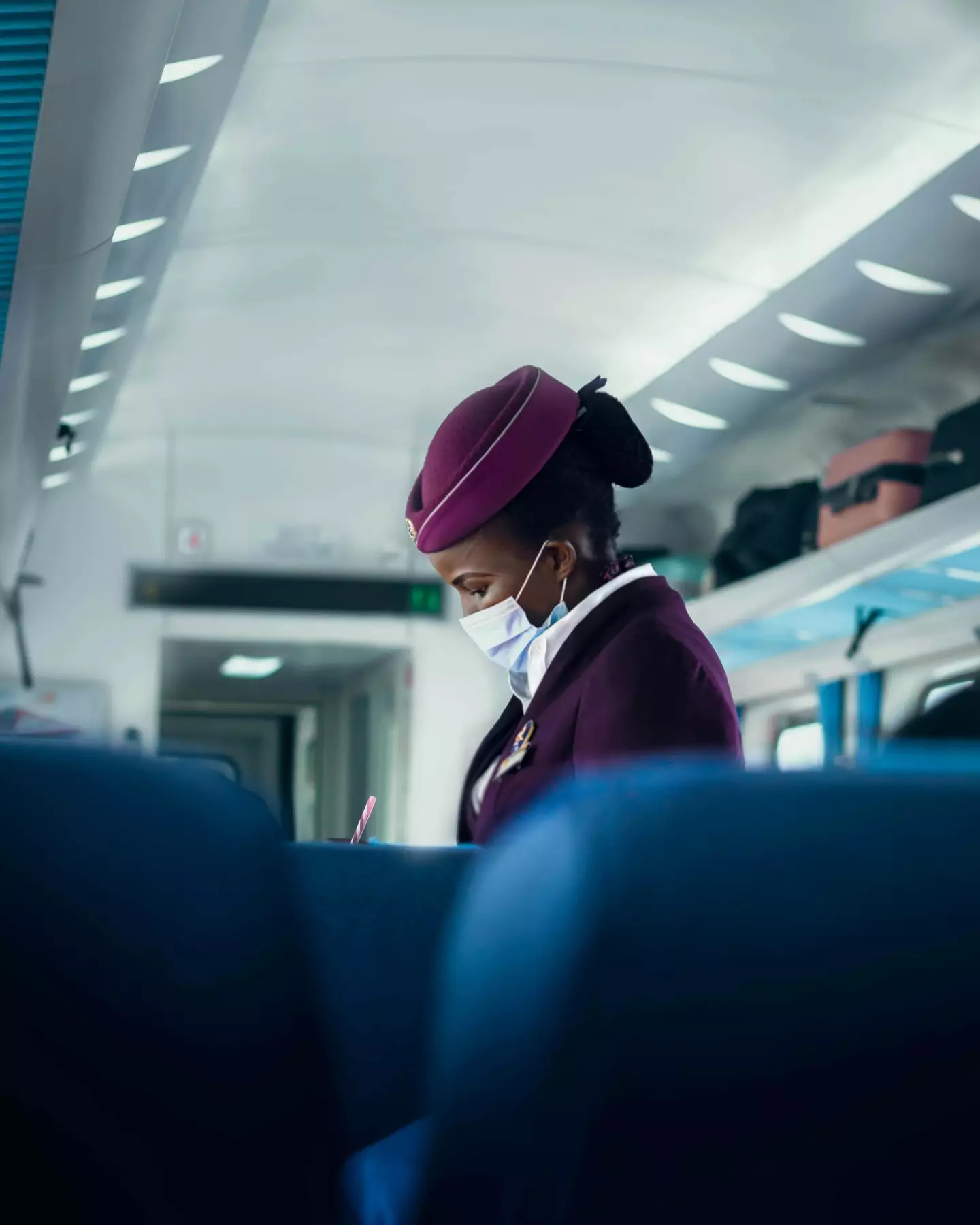
Ever noticed that when flight attendants take their seats in the cabin for takeoff or landing, they sit with their hands tucked under their legs?
Here's a clue, it's not for comfort.
A TikTok video by creator _hennylim_, or Henny, a flight attendant herself, addressed: 'Why do cabin crew sit on their hands while in their jumpseats?'
The video explains that flight attendants tend to assume what's called the 'brace position' during takeoff and landing.
Advert
As shown in the video, their feet are flat on the floor with their hands tucked under their legs.
This position helps brace their bodies to minimise injury in the event of a crash landing or other emergency.

'The aim is to keep the body in a rigid pose so that if there was any impact in an unplanned emergency, the body is damaged less,' Lim's video explained.
Advert
'This keeps body movement restricted so that there is less chance of injury if there was an impact.'
Of course, the safety belts and buckles handle the safety side of things pretty well ensuring that the attendants are secured in their seats.
Advert
While the full brace position is used when the 'brace for impact!' instruction is given in a crash situation, flight attendants must adopt a version of it every time they are in the jump seat due to the higher risk of being thrown during takeoff and landing.
Either way, it's still interesting to know why they sit on their hands.
'Good info. Always preparing for a crash is scary though,' one user commented.

Advert
The video was watched over 36,000 times and reached over 1300 likes.
After the popular video took off, multiple flight attendants jumped in to share their safety protocols - which is otherwise a mystery to those of us outside of the industry.
'Depending on the jump seat position and location, and the aircraft type, they also place their head a certain way for takeoff and landing,' Hilary Clark, who leads in-flight services with private jet company Planet 9, described.
'For example, if their seat is facing away from the pilots, toward the aft of the aircraft, they place their head slightly up and back on the headrest.
Advert
'If their seat is facing the pilots, to the forward of the aircraft, they place their head down and slightly tuck their chin as if they are bowing.'